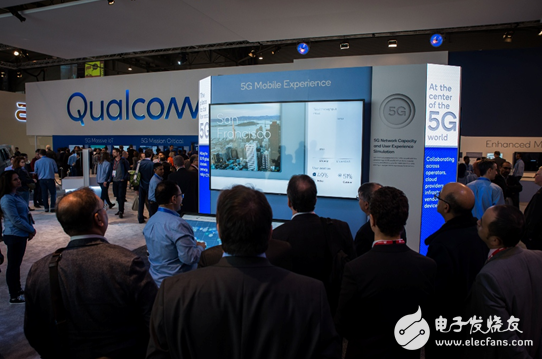Almost all astrophysicists agree that the Big Bang marks the beginning of everything—of course, we’re not referring to a famous music group, but rather to the real cosmic expansion that took place in the void. Around 13.7 billion years ago, the universe emerged from the explosion of a dense and extremely hot sphere, and with it, time itself was born. This initial point is known as the first singularity.
As human civilization advanced, development accelerated rapidly. The more progress we made, the faster our growth became, often multiplying at an exponential rate. Now, futurists are speculating about when the next singularity might occur—some say 2045, others 2030. But perhaps the exact date isn’t as important as the question of who will drive the breakthroughs in fundamental research and development before this moment arrives, especially in the field of information technology, which is closely tied to the upcoming singularity.
At the 2018 Mobile World Congress (MWC), there were clear signs of where the future might be heading.

(Qualcomm MWC booth)
5G Sprint: Qualcomm Completes Real Network Simulation Experiment
As a foundational technology, 5G is expected to generate products and services worth up to $12 trillion by 2035. Qualcomm has been a major player in developing the underlying technology for 5G, and its CEO once said that "the impact of 5G on the global economy will be similar to the invention of electricity or the automobile."
During MWC, Qualcomm shared the results of extensive 5G network simulation experiments conducted in cities like Frankfurt, Germany, and San Francisco, USA. These tests were carried out on both the 3.5GHz band and the 28GHz millimeter wave band. The results showed a fivefold increase in network capacity compared to the most advanced LTE Cat. 20 Gigabit networks. Additionally, the experiments achieved sevenfold and twenty-threefold improvements in response speed, significantly enhancing user experience. In San Francisco, the average web browsing download speed reached 1.4 Gbps. Beyond speed, 5G also improves video quality, offering users an 8K, 120fps, 10-bit color streaming experience, which opens new possibilities for developers to enhance VR and video applications.

(On-site display of 5G real network simulation experiment results)
With such significant breakthroughs in basic technology, Qualcomm is focused on quickly sharing 5G with partners. In the 5G era, due to the complexity of the technology, mobile phone manufacturers may need to integrate over 1,000 components into their devices. To address this, Qualcomm introduced the Snapdragon 5G module solution during MWC, integrating more than 1,000 components into several modules covering digital, RF, connectivity, and front-end functions. This solution is expected to be available in 2019, making it the first commercial 5G turnkey solution and allowing manufacturers to bring products to market faster and at lower costs.
The world’s first 5G chipset, the Qualcomm X50 5G modem, has been adopted by 20 global terminal manufacturers to support their early 5G smartphones, expected to launch in 2019. These include brands like ASUS, HMD Global, OPPO, Xiaomi, and ZTE. Meanwhile, many global wireless operators, including AT&T, China Mobile, and Verizon, have also selected the X50 for 5G trials.
Interoperability among different vendors is crucial for industry collaboration and a key step toward 5G commercialization. In November 2017, Qualcomm successfully demonstrated the first end-to-end 5G system based on the 3GPP R15 standard with ZTE and China Mobile. At MWC, they also showcased 5G interoperability testing involving ZTE, Huawei, Ericsson, Nokia, and Samsung, covering both sub-6GHz and millimeter wave bands.
Many Chinese operators and leading manufacturers have chosen to work closely with Qualcomm, highlighting the company’s strong focus on the Chinese wireless communication ecosystem. Just last January, Qualcomm announced a “5G pilot plan†with several Chinese manufacturers to explore the global opportunities brought by 5G and strengthen cooperation to support the upgrade of China’s smartphone industry.
The future of 5G is also shaped by continuous improvements in 4G LTE. On the eve of MWC, Qualcomm released the Snapdragon X24 LTE modem, bringing 4G LTE to the 2Gbps era. It is the first 7nm FinFET-based chip, marking the third generation of Gigabit LTE chipsets. According to a recent GSA report, the X24 LTE modem holds the fastest downlink speed record.
AI: Moving Toward the Terminal Side
Artificial Intelligence (AI) is another key technology driving humanity toward the next singularity. It enables different types of terminals to gain learning capabilities. Traditionally, neural network training and reasoning were done in the cloud or on servers. However, in recent years, this approach has shifted significantly. Tasks like pattern matching, detection, classification, and recognition are now being processed on the terminal side, improving performance, data privacy, and overall reliability.
At MWC, Qualcomm introduced the AI Engine—a hardware and software collection designed to accelerate AI experiences on the Snapdragon platform. The AI Engine includes Qualcomm Hexagon vector processors, Adreno GPUs, and Kryo CPUs, offering flexible support for various AI functions, data, and calculation accuracy. At the software level, developers can innovate and create cutting-edge AI use cases.
Many smartphone manufacturers, including Xiaomi, OPPO, vivo, and ASUS, have already integrated the AI Engine into their devices. Some are planning to use it in future flagship models. Qualcomm has also partnered with leading AI software companies and cloud service providers to optimize AI use cases on the Snapdragon platform, such as image and camera features, face unlocking, and scene detection.
Various Types of Terminals: Enhancing the Experience
At MWC, the Qualcomm Snapdragon 845 mobile platform received the annual GTI Mobile Technology Innovation Breakthrough Award. Designed for immersive multimedia and AI experiences, it represents a major leap forward in how people interact with the world.
Several flagship smartphones, including the Samsung Galaxy S9, Sony Xperia XZ2, and ASUS ZenFone 5Z, were announced to feature the Snapdragon 845. The platform will also power a range of domestic phones, such as the Xiaomi MIX 2S.
In addition, Qualcomm launched the Snapdragon 700 series, aiming to bring advanced features to more affordable devices. This series offers improved performance, camera capabilities, and power efficiency, making high-end mobile experiences more accessible.
Thanks to rapid innovation in smartphone platforms, the pace of mobile technology advancement continues to grow. As the largest innovation platform, mobile tech is reshaping adjacent industries.
Qualcomm also introduced a new VR reference platform based on the Snapdragon 845, supporting next-gen smartphone and standalone VR headsets. In AR and VR, the company has helped launch over 20 terminals, including Google Daydream, Oculus, and Vive devices.
In the PC space, ASUS, HP, and Lenovo launched new Windows 10 devices powered by Qualcomm’s mobile PC platform, enabling always-connected computing through LTE networks. These “always connected PCs†combine smartphone-like simplicity with the power of Windows 10, transforming how people work and play.
Inverter 12V,Inverter 4000W 12V,Portable Mini Inverter 12 V,Solar Power Inverter 12V
GuangZhou HanFong New Energy Technology Co. , Ltd. , https://www.gzinverter.com